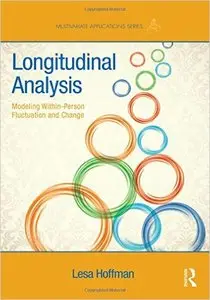Lesa Hoffman, "Longitudinal Analysis: Modeling Within-Person Fluctuation and Change"
English | ISBN: 0415876001, 0415876028 | 2014 | 654 pages | PDF | 7 MB
English | ISBN: 0415876001, 0415876028 | 2014 | 654 pages | PDF | 7 MB
Longitudinal Analysis provides an accessible, application-oriented treatment of introductory and advanced linear models for within-person fluctuation and change. Organized by research design and data type, the text uses in-depth examples to provide a complete description of the model-building process. The core longitudinal models and their extensions are presented within a multilevel modeling framework, paying careful attention to the modeling concerns that are unique to longitudinal data. Written in a conversational style, the text provides verbal and visual interpretation of model equations to aid in their translation to empirical research results. Overviews and summaries, boldfaced key terms, and review questions will help readers synthesize the key concepts in each chapter.
Written for non-mathematically-oriented readers, this text features:
A description of the data manipulation steps required prior to model estimation so readers can more easily apply the steps to their own data
An emphasis on how the terminology, interpretation, and estimation of familiar general linear models relates to those of more complex models for longitudinal data
Integrated model comparisons, effect sizes, and statistical inference in each example to strengthen readers’ understanding of the overall model-building process
Sample results sections for each example to provide useful templates for published reports
Examples using both real and simulated data in the text, along with syntax and output for SPSS, SAS, STATA, and Mplus at www.PilesOfVariance.com to help readers apply the models to their own data
The book opens with the building blocks of longitudinal analysis―general ideas, the general linear model for between-person analysis, and between- and within-person models for the variance and the options within repeated measures analysis of variance. Section 2 introduces unconditional longitudinal models including alternative covariance structure models to describe within-person fluctuation over time and random effects models for within-person change. Conditional longitudinal models are presented in section 3, including both time-invariant and time-varying predictors. Section 4 reviews advanced applications, including alternative metrics of time in accelerated longitudinal designs, three-level models for multiple dimensions of within-person time, the analysis of individuals in groups over time, and repeated measures designs not involving time. The book concludes with additional considerations and future directions, including an overview of sample size planning and other model extensions for non-normal outcomes and intensive longitudinal data.
Class-tested at the University of Nebraska-Lincoln and in intensive summer workshops, this is an ideal text for graduate-level courses on longitudinal analysis or general multilevel modeling taught in psychology, human development and family studies, education, business, and other behavioral, social, and health sciences. The book’s accessible approach will also help those trying to learn on their own. Only familiarity with general linear models (regression, analysis of variance) is needed for this text.



